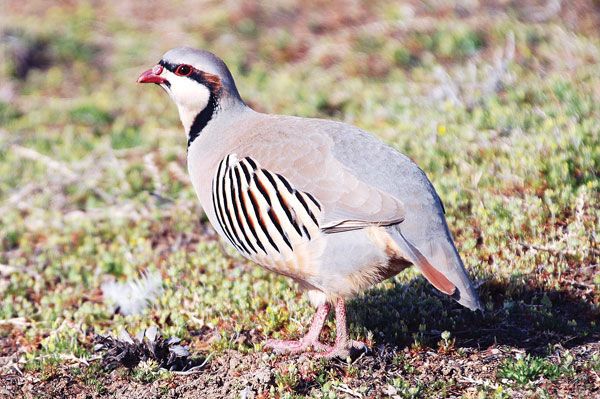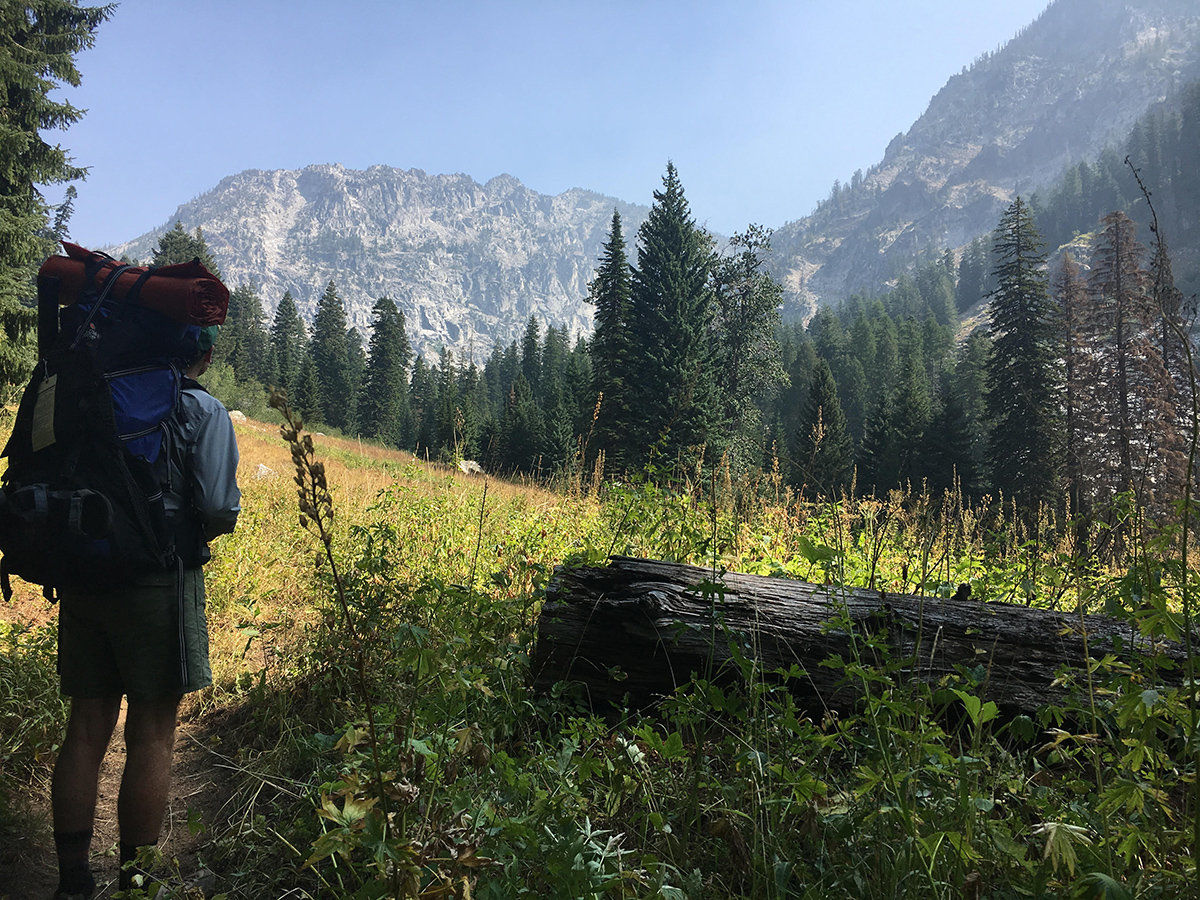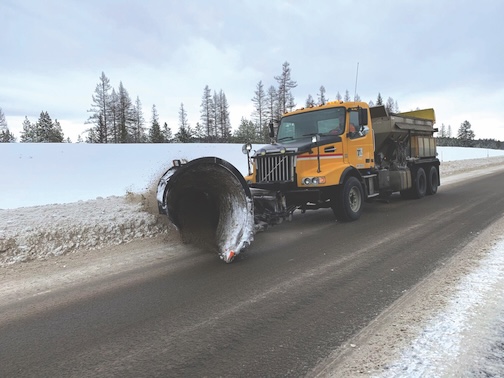Upland bird hunting forecast
Published 3:00 am Saturday, September 10, 2022

- Chukar, a type of partridge, is a popular upland game bird in Northeastern Oregon.
The Oregon Department of Fish and Wildlife has released its forecast for fall and winter bird hunting conditions.
Trending
Bird hunters will find strong upland bird populations across the state, with some exceptions. Upland bird populations can vary greatly from year to year depending on weather and habitat conditions. Upland production surveys indicate improvements in both density and production from the previous year for chukar and California quail.
The winter of 2021-22 was dry and mild, and ample moisture in April and May improved forage and habitat conditions.
However, cool, wet weather that persisted into June, which is the peak hatch period for wild turkey, forest grouse and pheasants, affected chick survival somewhat. Hunters might see younger chicks this fall, as birds had second nests after losing their first batch of chicks.
Trending
Despite the spring moisture, drought, in varying degrees, continues in much of Eastern Oregon, more severe in Central and Southern Oregon compared with Northeastern Oregon.
Hunters will find upland birds using the remaining “green groceries” of the high desert — valuable wet meadows and riparian areas with abundant forage plants and insects.
Forecasts for individual counties:
BAKER
Upland game bird hunters should see a better than average year in Baker County. A mild winter and favorable spring conditions led to good chick production. Birds had good reproduction, chicks were of good size, and broods were generally large.
Quail seem to be still trying to recover from the hard winter of 2016-17 and their numbers have been down the last several years. Hunters should expect to see birds scattered in pockets of good habitat. Access & Habitat properties offer good upland hunting and access to public land.
UNION
The best hunting opportunities are pheasant on the Ladd Marsh Wildlife Area and forest grouse on national forests. Hunters should work ridge tops above 5,000 feet for blue grouse and stream corridors with heavy cover and water for ruffed grouse.
Ladd Marsh Wildlife Area is open Wednesday, Saturday, Sunday and federal holidays through Jan. 31, 2023.
It’s looking like a moderate upland season on the Marsh with good brood sizes but they’re few and far between. A historic drought has left Union County and the marsh with low numbers of broods.
Grassland, fencerows, brush and areas adjacent to agricultural fields are good locations to key on but don’t overlook dry and receding wetlands. The wetland habitat provides more opportunity for pheasants than all the other areas combined.
All visitors, including hunters, must have in their possession a free daily permit to access the wildlife area. Permits will be available at several self check-in stations at entry points and parking lots. All visitors are required to have an ODFW Wildlife Area Parking Permit to park on the wildlife area. Hunters receive a free parking permit with their hunting license. Parking permits are to be displayed on the vehicle dash.
More information is available by calling 541-963-4954.
• Pheasants — There were some very good-size broods around the area with a wide range of sizes, from a few weeks old to almost completely grown.
• Mourning doves — It looks like another stellar year on Ladd Marsh for doves with almost 250 bands out again and very large numbers congregating around what little water is left. The birds are either in the leave strips of grain or next to water, or transitioning between the two.
• Quail — numbers are still down from years past but the brood size was very good. Most are around the safety zone borders.
WALLOWA
Fire closures and associated access restrictions limited biologists’ ability to survey some areas this season, and will likely affect hunters as well.
Mild winter and spring conditions were likely good for production; however, the drought conditions throughout the summer may have impacted brood survival due to limited forage resources.
In general, surveys for blue (dusky) and ruffed grouse indicate that blue grouse populations are still below the long-term average. Nevertheless, these species should provide fair opportunity during September and early October, especially in more heavily forested areas in the Snake River Unit.
Forest grouse hunters should be aware that there are vehicle restrictions and no camping allowed on Hancock forestlands during fire season.
Chukar remain abundant in more arid areas, specifically in patches of cheatgrass above the Imnaha River and on vegetated slopes along the Wenaha and Grande Ronde rivers.
GRANT
Trend counts for quail, turkey and chukar are down slightly for the 2022 season while forest grouse were difficult to find in surveys. However, they tend to follow the same pattern as other birds and are likely down slightly as well. The likely cause is the unusually cool and wet spring.
Turkey and chukar offer the best opportunities this season for upland hunters, with turkey widely distributed through the county. Turkeys tend to congregate in large numbers in the John Day Valley, Ritter area and Monument during winter. However, many of these birds are on private land so hunters must be sure to obtain permission before hunting. Turkey season started Sept. 1 in Grant County. This allows hunters the opportunity to harvest turkeys on public lands before turkeys migrate to private lands.
The Philip W. Schneider Wildlife Area is open to the public and offers good bird hunting. Quail, both California and mountain, can be found in brushy and riparian areas throughout the county but hunters will have to work to flush them out of cover. Hunters will find grouse throughout the national forest with blue grouse on ridge tops, like Strawberry Mountain or Vinegar Hill, and ruffed along brushy creek bottoms, like Murderers Creek or Camp Creek.
MALHEUR
Last winter was very mild and dry which was good for over winter survival for upland birds. This year moisture came later in the spring which greatly improved range conditions and benefited chukar and quail.
• Chukar — Surveys on established routes yielded 45 birds per 10 miles, a 78% increase from last year and 2% below the 10-year average of 45 birds per 10 miles. Brood production was good at 11.1 chicks per brood but total number of brood classified was significantly higher than previous 2 years. Most notable increase in chukar number was in the northern part of Malheur County.
• Pheasant — Surveys along established routes yielded .9 birds per 10 miles, a 77% decrease in number of birds observed from last year’s survey and 86% below the 10-year average. Chick production was poor at 2 chicks per brood. Hunting prospects will vary depending on the farming practices in the area where you have permission to hunt. The outlying areas around Willow Creek and Vale have higher bird numbers than areas closer to Ontario and Nyssa.
There are very few public lands in the area available to pheasant hunters and the few parcels that are available tend to get hunted daily. One option for private lands access is the Cow Hollow fundraiser to benefit the Cow Hollow Park.
• California quail — Surveys on established routes yielded 36 quail per 10 miles, a 9% decrease from last year and 12% below the 10-year average. Production was good at 9.7 chicks per brood with good production observed in range and agricultural lands.
UMATILLA
The majority of upland hunting is on private land, so be sure to ask permission prior to hunting. Hunters looking for public land can access the Columbia Basin Wildlife Areas, including Power City, Irrigon, Coyote Springs and Willow Creek. There are good numbers of quail at Irrigon and Willow Creek Cold Springs National Wildlife Refuge is also an option for upland hunting.
August surveys indicate that the pheasant population is still down this year in Umatilla County, but data gathered outside of regular surveys indicate brood numbers to be fairly normal. Quail surveys indicate the population to be about average and mourning dove numbers appear to be excellent. There are some gray partridge and chukar in suitable habitat in the county but none were observed on surveys this year.
YOUTH PHEASANT HUNTS
There are several free youth pheasant hunts around the state. ODFW and its partners stock pheasants at these special events, which are open to youth 17 and younger who have successfully completed hunter education.
The hunts are free, though participants need a valid hunting license ($10 for youth 12 and older, free for age 11 and under) to hunt. Youth hunters age 12-17 also need an upland game bird validation ($4). Purchase before the event, online or at a license sales agent. Licenses and validations will not be sold at the events.
See pages 26-27 of the Oregon Game Bird Regulations for more information, or see myodfw.com/workshops-and-events for the local contact for each hunt. For help signing up, contact Myrna Britton at 503-947-6028 or by email at Myrna.B.Britton@odfw.oregon.gov
• La Grande, Ladd Marsh Wildlife Area, Sept. 17 and Sept. 18. No advance registration required.
• John Day Valley, Sept. 17 and Sept. 18.
• Irrigon Wildlife Area (between Irrigon and Umatilla), Sept. 24 and Sept. 25. Sign up for morning or evening hunt.
YOUTH WATERFOWL HUNTS
The state youth waterfowl season, set for Sept. 24 and 25, gives young hunters the first shots of the season. To participate, hunters must:
• be 17 or younger.
• have successfully completed hunter education.
• have the proper hunting licenses, validations, and federal duck stamp for their age category.
• be accompanied by a non-hunting adult 21 years of age or older.
Ruffed and blue grouse
Open area: statewide
Open dates: Sept. 1 to Jan. 31, 2023
Daily bag limit: 3 of each species
Possession limit: 9 of each species
Chukar and Hungarian (gray) partridge
Open area: statewide
Open dates: Oct. 8 to Jan. 31, 2023
Daily bag limit: 8
Possession limit: 24
Rooster pheasant
Open area: statewide
Open dates: Oct. 8 to Dec. 31, 2023
Daily bag limit: 2
Possession limit: 8
Quail (California and mountain)
Open area: Eastern Oregon
Open dates: Oct. 8 to Jan. 31, 2023
Daily bag limit: 10 (may not include more than 2 mountain quail)
Possession limit: 30 (may not include more than 6 mountain quail)
Bobwhite quail may be taken as part of the quail bag limit.
Wild turkey
Units 36-38, 40, 43 – 45, 48 (area north and west of the North Fork John Day River), 49, 51, 52, 53 – 65, and 673
Season dates: Oct. 8 – Nov. 30 and Dec. 1- Jan. 31, 2023
Daily bag limit: 1 turkey of either sex
Season limit: 1
Note: From Dec. 1 – Jan. 31, 2023, hunting is allowed only on private lands by permission.
Units 46, 47, 48 (area south and east of the North Fork John Day River), and 50
Season dates: Sept. 1 – Nov. 30 and Dec. 1- Jan. 31, 2023
Daily bag limit: 1 turkey of either sex
Season limit: 1
Note: From Dec. 1 – Jan. 31, 2023, hunting is allowed only on private lands by permission.









